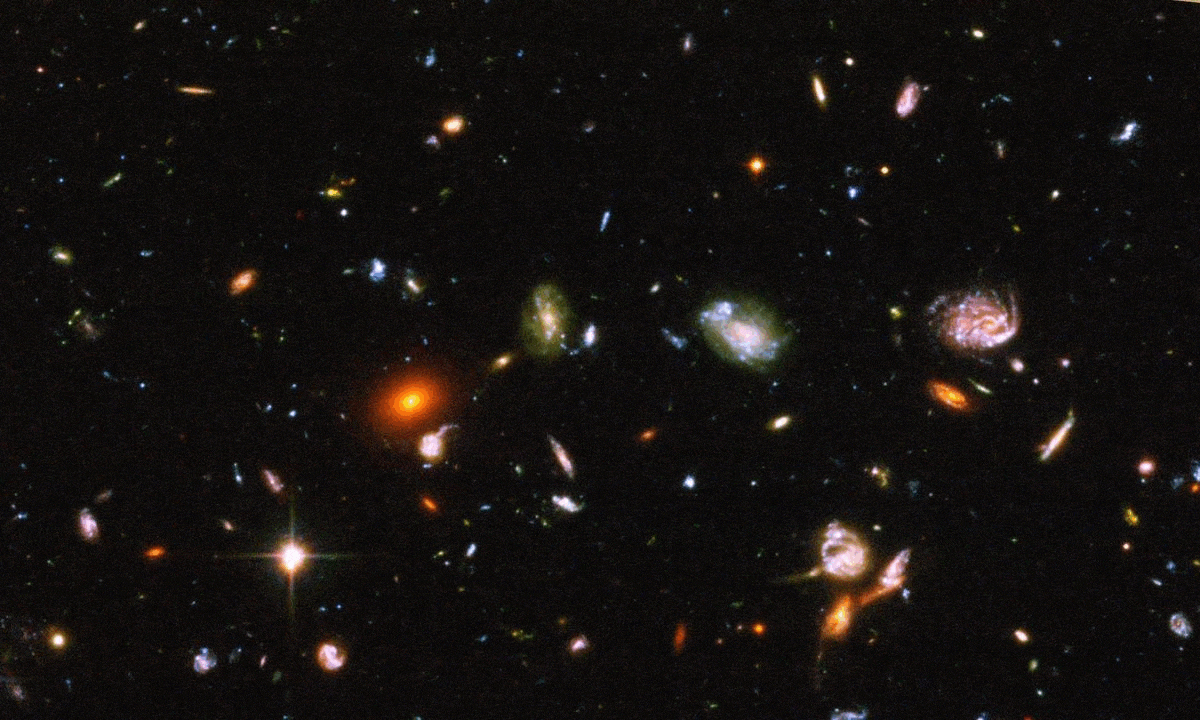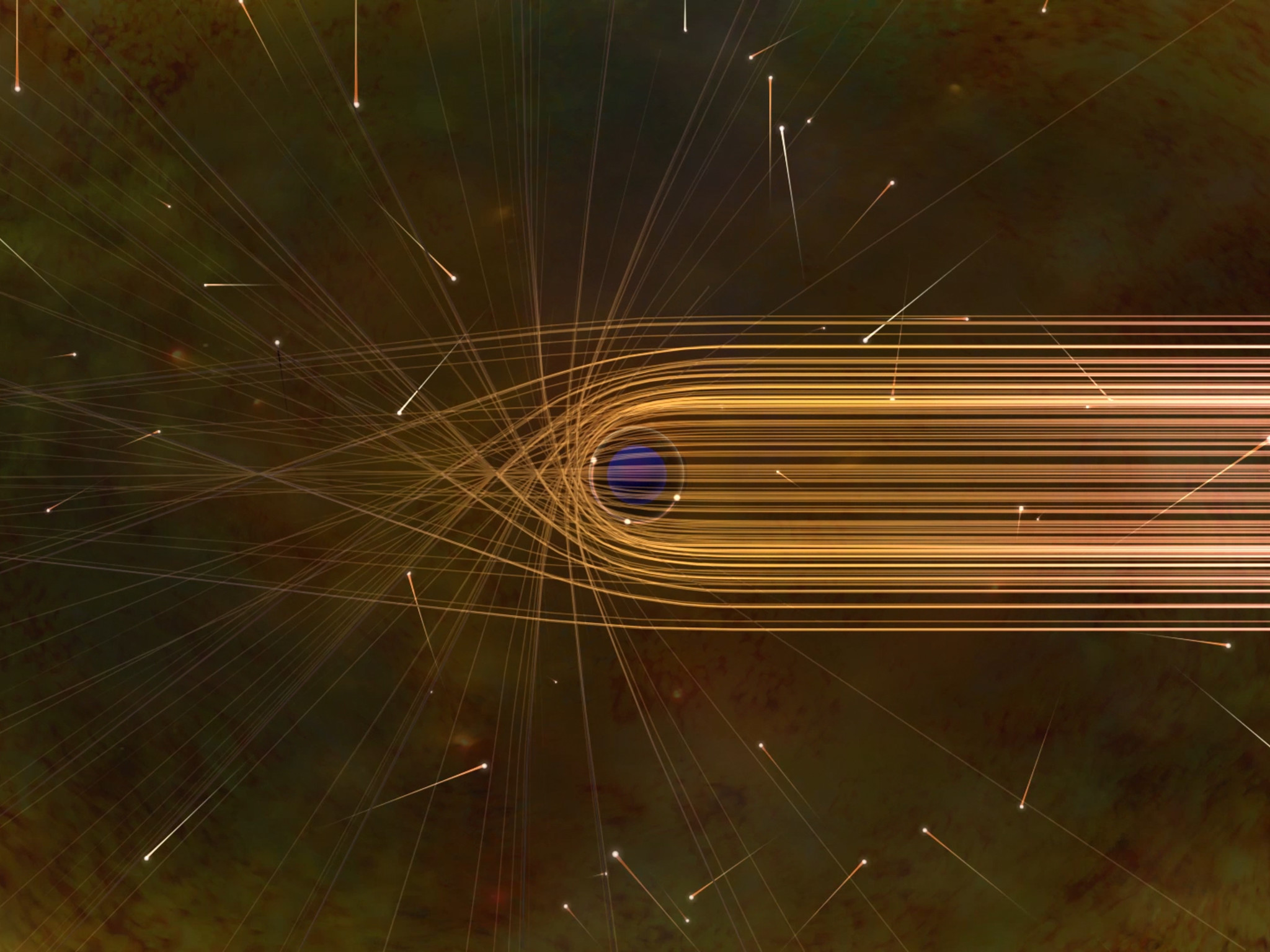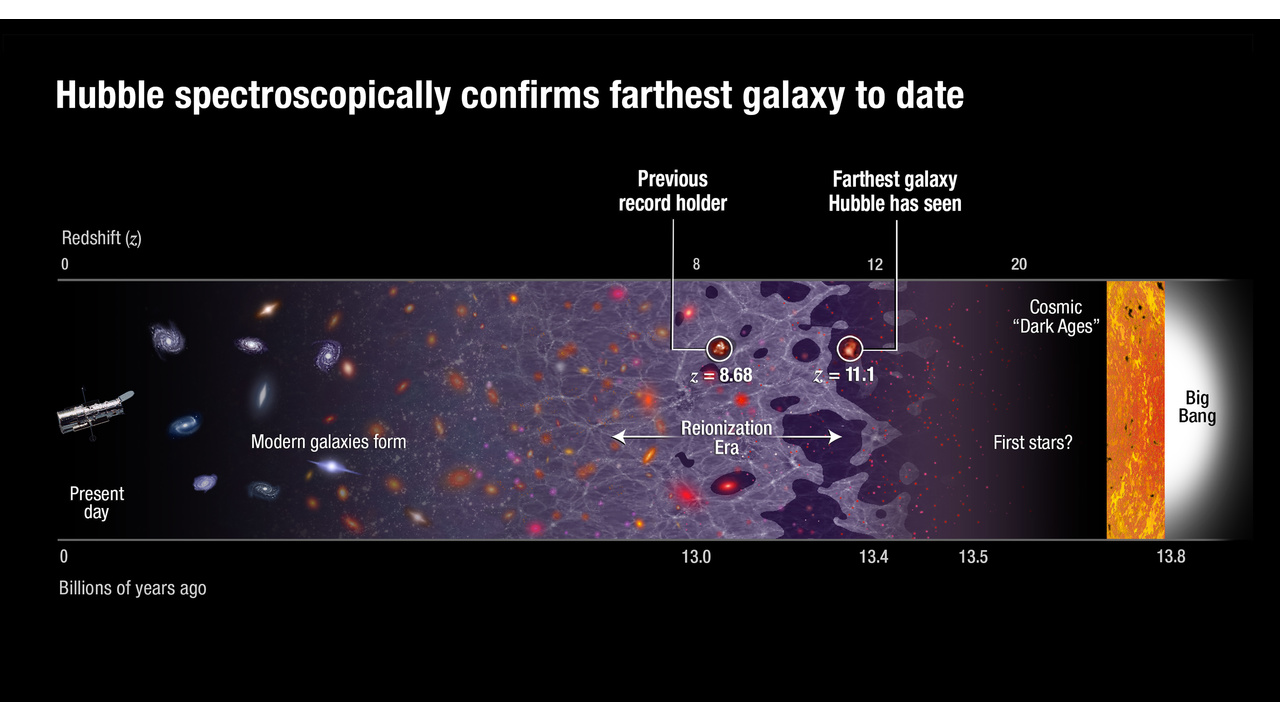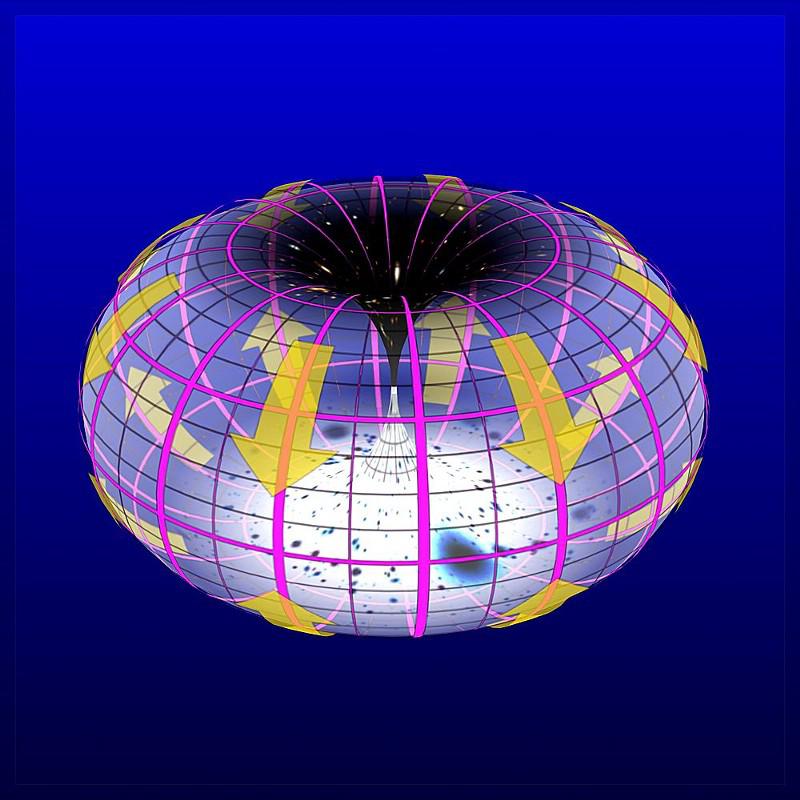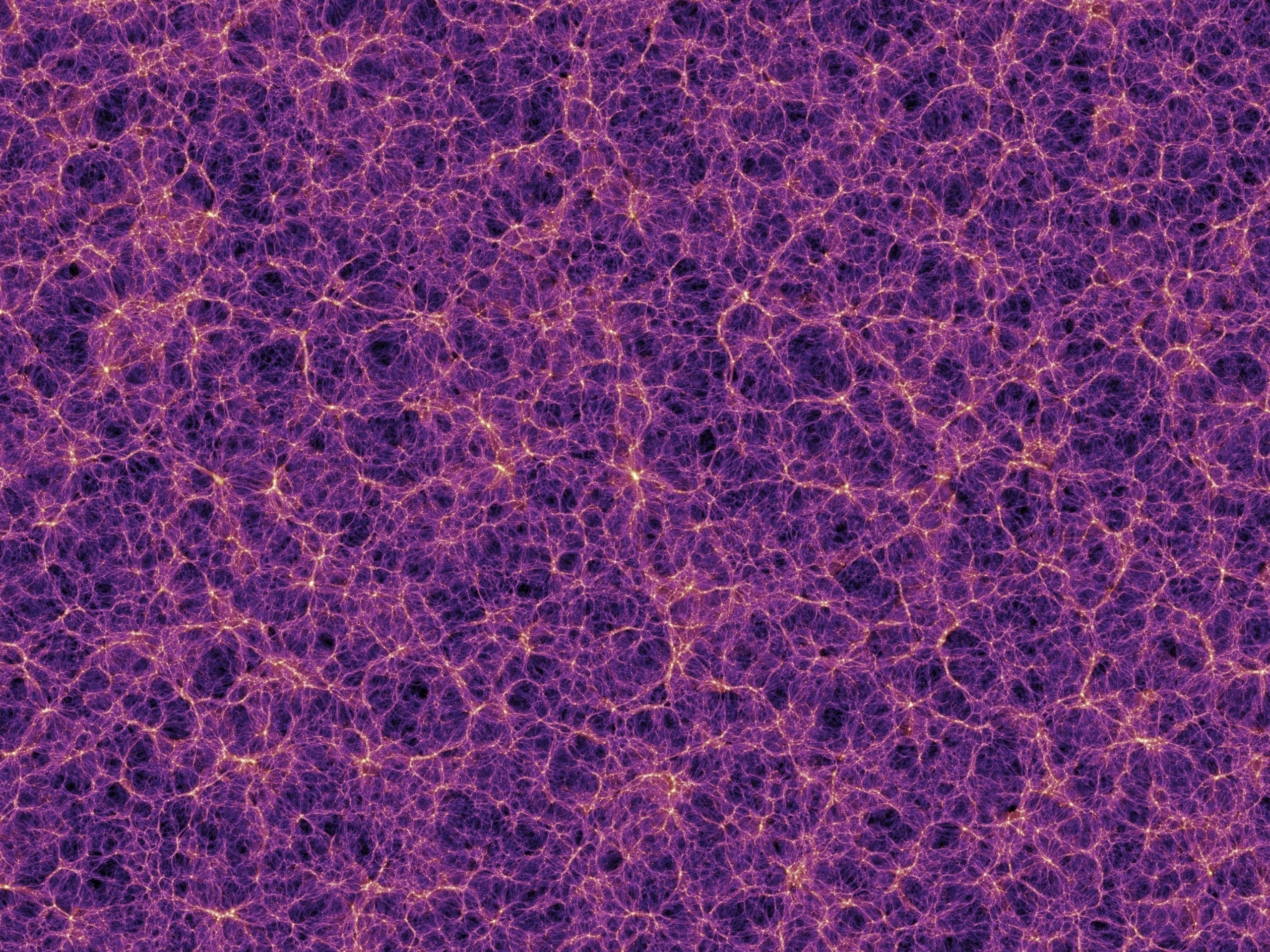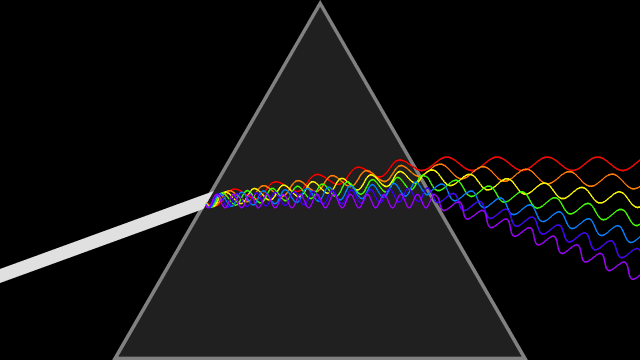Space didn’t used to be a big place
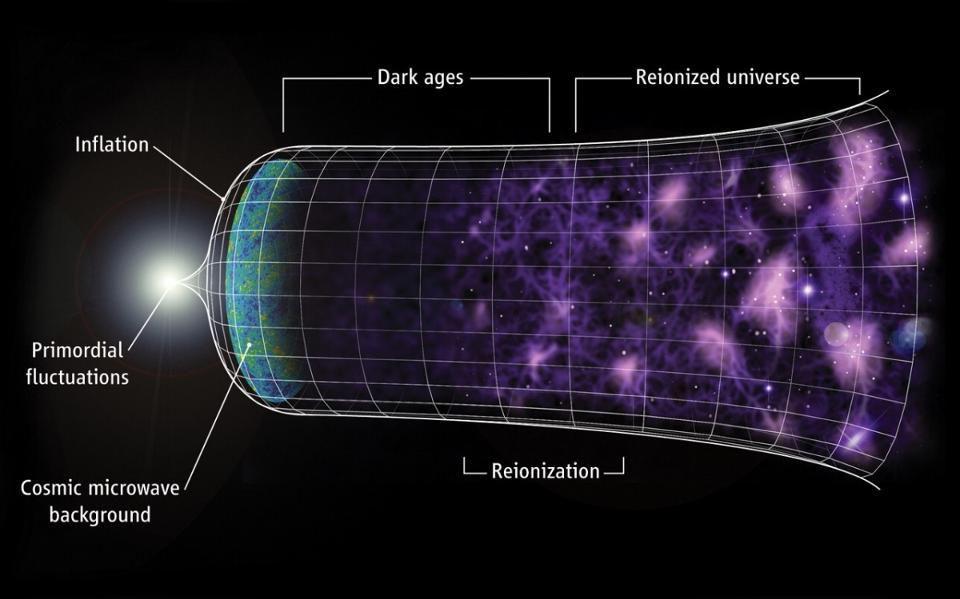
- With light-years separating the stars and millions of light-years separating large galaxies from one another, space is both vast and sparse today.
- But our Universe has been expanding, cooling, and gravitating for its entire 13.8 billion year existence, mandating that things were denser and closer in the past.
- Early on, objects were not only clumped together with little separation between them, but space itself wasn’t even all that big. Try to wrap your minds around that!
There are few things we can conceive of that are as mind-bogglingly large as space is. Our observable Universe, out to the deepest recesses of space that we can possibly see, takes us out some 46 billion light-years in all directions. From the Big Bang until now, our Universe has expanded while gravitating at the same time, giving rise to stars and galaxies spread across the expanse of outer space. All told, there are currently several trillion galaxies present within it, as for every galaxy we know about, there are perhaps 30 to 100 that are too small, faint, and distant for us to presently observe.
And yet, if we go back in time, we learn that not only was our Universe a much smaller place, but that in the earliest stages, the Universe itself was anything but impressive. If the Universe has been expanding and cooling for 13.8 billion years, then long ago, it must have been smaller and denser, implying that there may not always have been such a remarkably large volume to contain all the particles that have existed for so long. Space may not always have been a big place, and it’s only the fact that our Universe has expanded so thoroughly and relentlessly that made it so big and empty today.

If we look at the Universe today, there’s no denying the enormity of its scale. Containing somewhere in the neighborhood of 400 billion stars, our Milky Way galaxy stretches for over 100,000 light-years in diameter. The distances between the stars is enormous, with the closest star to our Sun (Proxima Centauri) located some 4.24 light-years away: over 40 trillion kilometers distant. Toward the center of the galaxy or within the dense spiral arms, stars are closer together, on average, but between the arms or in the Milky Way’s outskirts, the typical distances separating the stars can be much greater than even what we experience at our location.
While some stars are clumped together in groups, either in multi-star systems or within star clusters of various types, the majority of star systems are like our own: possessing single stars that are relatively isolated from all the others within a galaxy. Once you’re willing to look beyond our own galaxy, you’ll find that the Universe becomes a much sparser place indeed, with only a small fraction of the Universe’s volume actually containing galaxies. Most of the Universe, as far as we can tell, is empty space: devoid of stars and galaxies entirely, with only a tiny amount of intergalactic matter present.

Our Local Group, for example, contains another large galaxy: Andromeda, located 2.5 million light-years away from us. A number of significantly smaller galaxies are present as well, including the Triangulum galaxy (the Local Group’s 3rd largest), the Large Magellanic Cloud (#4), and upward of 100 other, much smaller neighbors. The entire extent of the Local Group, containing a large number of galaxies but whose stellar content is overwhelmingly dominated by ourselves and Andromeda, is all contained within about 3 million light-years of the Milky Way’s location.
Beyond the Local Group, galaxies are found clumped and clustered together throughout the Universe, with a cosmic web consisting of large galaxy clusters connected by galaxy-dotted filaments. The Universe came to be this way not only because it expanded and cooled, but because it gravitated as well. The initially overdense regions preferentially attracted matter and gave rise to the structures we see; the underdense regions gave up their matter to the denser ones, becoming the great cosmic voids that dominate the majority of the Universe’s volume.
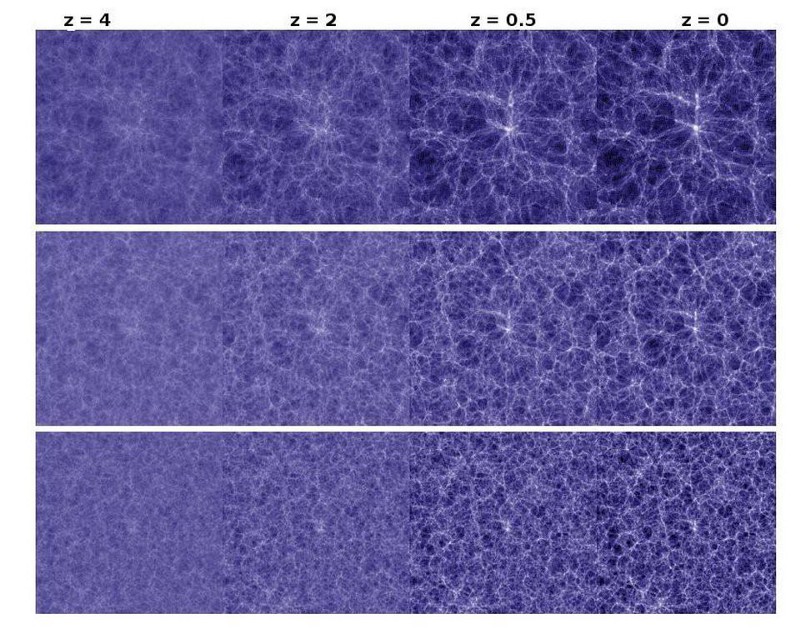
All told, our observable Universe is truly enormous today. Centered on any observer — including ourselves — we can see objects as far away as 46.1 billion light-years in any direction. When you add it all up, that equates to a volume of 4.1 × 1032 cubic light-years. Even if we abandon the conservative route and estimate that there are a whopping 20 trillion galaxies contained within our observable Universe, that would imply that each galaxy, on average, has about 2 × 1019 cubic light-years of volume all to itself.
If the galaxies were all evenly spaced throughout the Universe, and they most definitely are not, you could put your finger down on a galaxy and draw a sphere around it that was approximately 2 million light-years in radius and never hit another galaxy. But that’s not how galaxies are distributed. In our location within the Universe, we see that the number density of galaxies is hundreds of times greater than the expected average density for galaxies overall. What makes up for overdensities, like us? It’s the space in between the galaxy groups and clusters where the majority of the Universe’s volume lies, and that’s mostly empty space.

But the reason the Universe is this large today is because it’s expanded and cooled to reach this point. Even today, the Universe continues to expand at a tremendous rate: approximately 70 km/s/Mpc. At the farthest reaches of the Universe, 46.1 billion light-years away, the amount of Universe that we can observe grows by an additional 6.5 light-years with each year that passes by.
That means if we extrapolate in the opposite direction in time — looking back as far as we like into the past — we’ll find the Universe as it was when it was younger, hotter, and smaller. Today, the Universe extends for 46 billion light-years in all directions, but that’s because it’s been 13.8 billion years since the Big Bang, and our Universe contains a specific mix of dark energy, matter, and radiation in various forms.
If we went back to when the Universe was just 3 billion years old (about 20% of its current age), we’d find that it was only about 9 billion light-years in radius (just 0.7% of its current volume).

And we don’t have a problem looking back to see galaxies and galaxy clusters when the Universe was that young; the Hubble Space Telescope and the James Webb Space Telescope, among others, have taken us back much farther than that. At the earliest times that we can still observe self-luminous entities like galaxies and quasars, we find that, on average, these star-rich entities were:
- smaller,
- bluer,
- lower in mass,
- sparser in heavy elements,
- and less evolved, on average,
as the Universe hadn’t had enough time to form the largest, most massive structures of all.
The Universe, in this early stage, was much denser overall than it is today. The number of matter particles remains the same over time, even as the Universe expands, meaning that the Universe at age ~3 billion years is about 150 times denser than the Universe is today, at age ~13.8 billion years. Instead of about 1 proton’s worth of mass per cubic meter, there were closer to 100 protons’ worth in every cubic centimeter back then. However, we can go back to much earlier times and find a Universe that’s not only smaller and denser, but dramatically different as well.

If we go back to when the Universe was just 100 million years old — less than 1% of its present age — things start to look dramatically different. The very first stars had started forming only recently, but there were no galaxies yet, not even one. The Universe is about 3% of its present scale at this time, meaning that it has just 0.003% its present volume, and 40,000 times its present density. The Cosmic Microwave Background is hot enough, at this time, to boil liquid nitrogen.
But we can go much further back in time, and discover an even smaller Universe. The light from the Cosmic Microwave Background that we see was emitted when the Universe was only 380,000 years old: when it was more than a billion times denser than it is today. If you drew a circle around our local supercluster today, Laniakea, it would encapsulate a much larger volume than the entire observable Universe did back in those early, hot, dense stages.
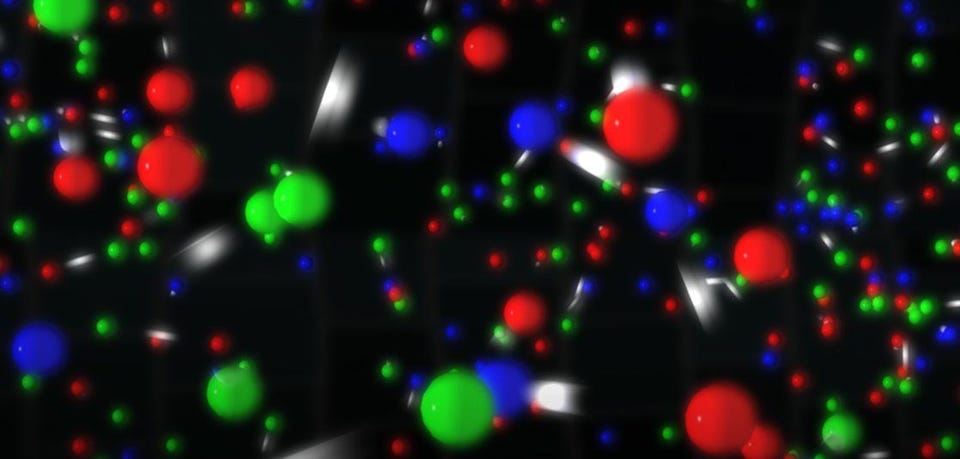
It means that if we went back to a time where the Universe was approximately a decade old, ten years after the Big Bang first occurred, the entire observable Universe — containing all the matter we have making up our 20 trillion estimated galaxies today — would be no bigger than the Milky Way galaxy.
It means that if we went back to a time when a mere one second had passed since the Big Bang, back when the last of the early Universe’s antimatter (in the form of positrons) was annihilating away, the entire observable Universe would only be about 100 light-years in diameter.
And it means that in the very early stages of the Universe, back when only perhaps a picosecond (10-12 seconds) had passed since the Big Bang, the entire observable Universe could fit inside a sphere no bigger than the size of Earth’s orbit around the Sun. The entire observable Universe, back in the Big Bang’s early stages, was smaller than the size of our Solar System.

You might think that you could take the Universe all the way back to a singularity: to a point of infinite temperature and density, where all its mass and energy concentrated into a singularity. But we know that’s not an accurate description of our Universe. Instead, a period of cosmic inflation must have preceded and set up the Big Bang.
From evidence in today’s Cosmic Microwave Background, we can conclude there must have been a maximum temperature that the Universe reached during the hot Big Bang: no more than about ~1029 K. Although that number is enormous, it’s not only finite, it’s well below the Planck scale. When you work out the mathematics, you find a minimum diameter for the Universe at the start of the hot Big Bang: around 1 meter (3.3 feet), or around the size of a human child.

It’s true that we don’t know how large the unobservable part of the Universe truly is; it may be infinite. It’s also true that we don’t know how long inflation endured for or what, if anything, came before it. But we do know that when the hot Big Bang began, all the matter and energy that we see in our visible Universe today, all the stuff that extends for 46.1 billion light-years in all directions, must have been concentrated into a volume of around the size of a soccer ball.
For at least a short period of time, the vast expanse of space that we look out and observe today was anything but big. All the matter making up entire massive galaxies would have fit into a region of space smaller than a pencil eraser. And yet, through 13.8 billion years of expansion, cooling, and gravitation, we arrive at the vast Universe we occupy a tiny corner of today. Space may be the biggest thing we know of, but the size of our observable Universe is a recent achievement. Space wasn’t always so big, and the evidence is written on the face of the Universe: where all of us can see the evidence.
